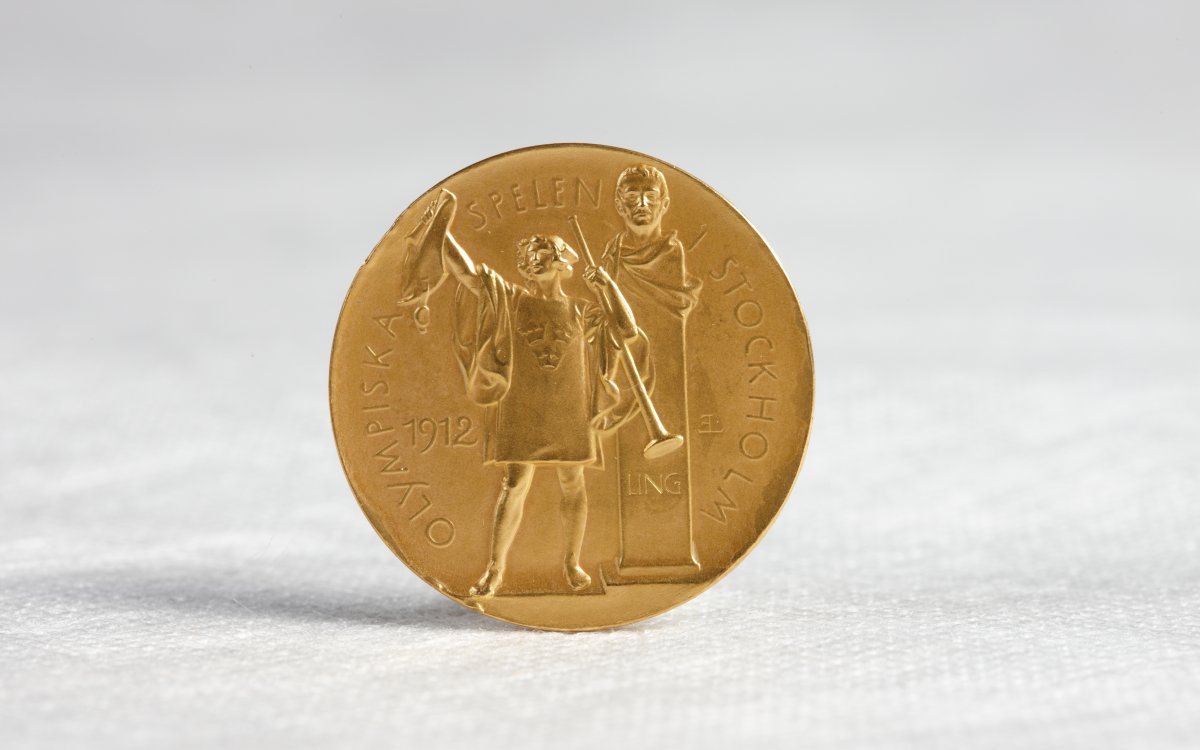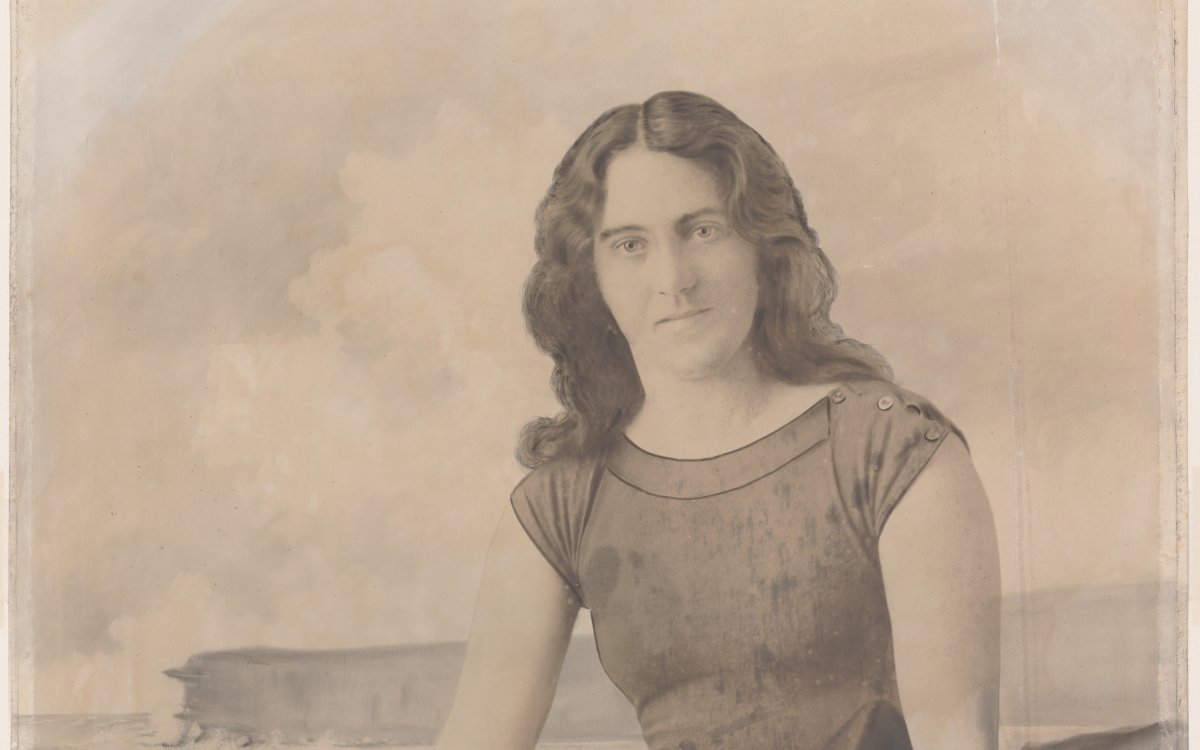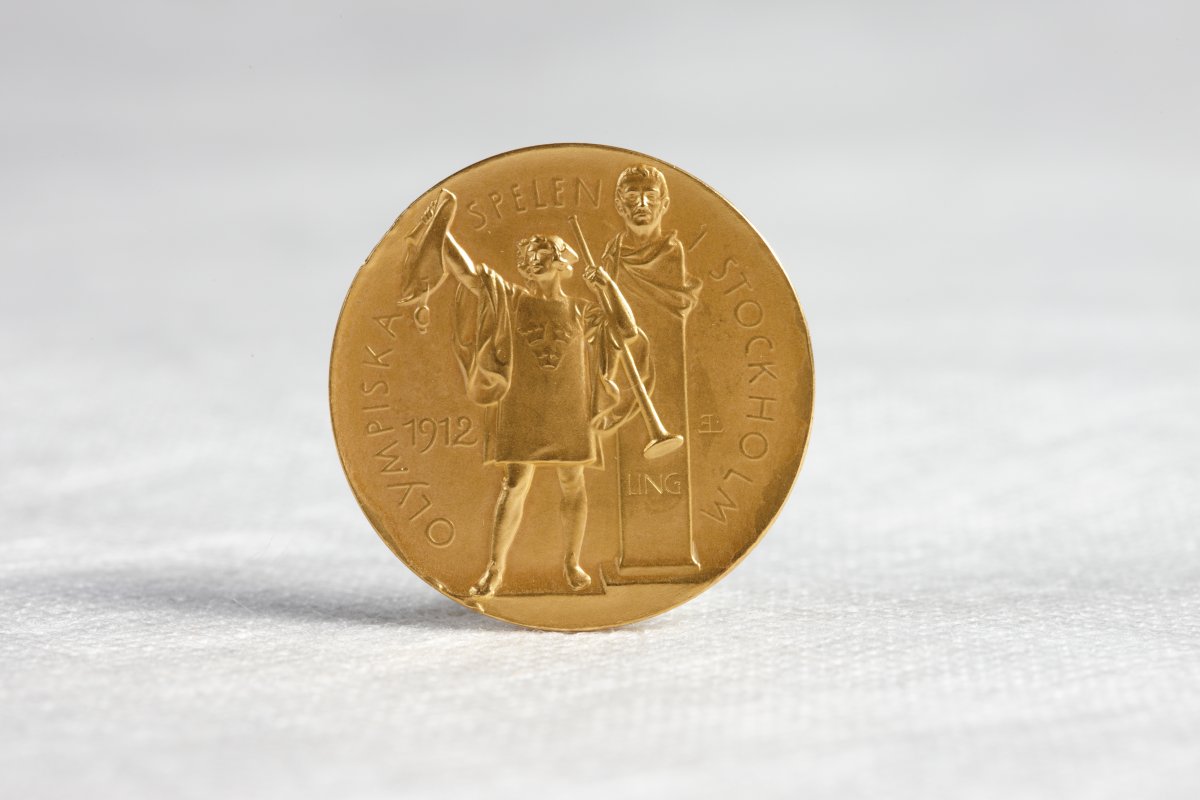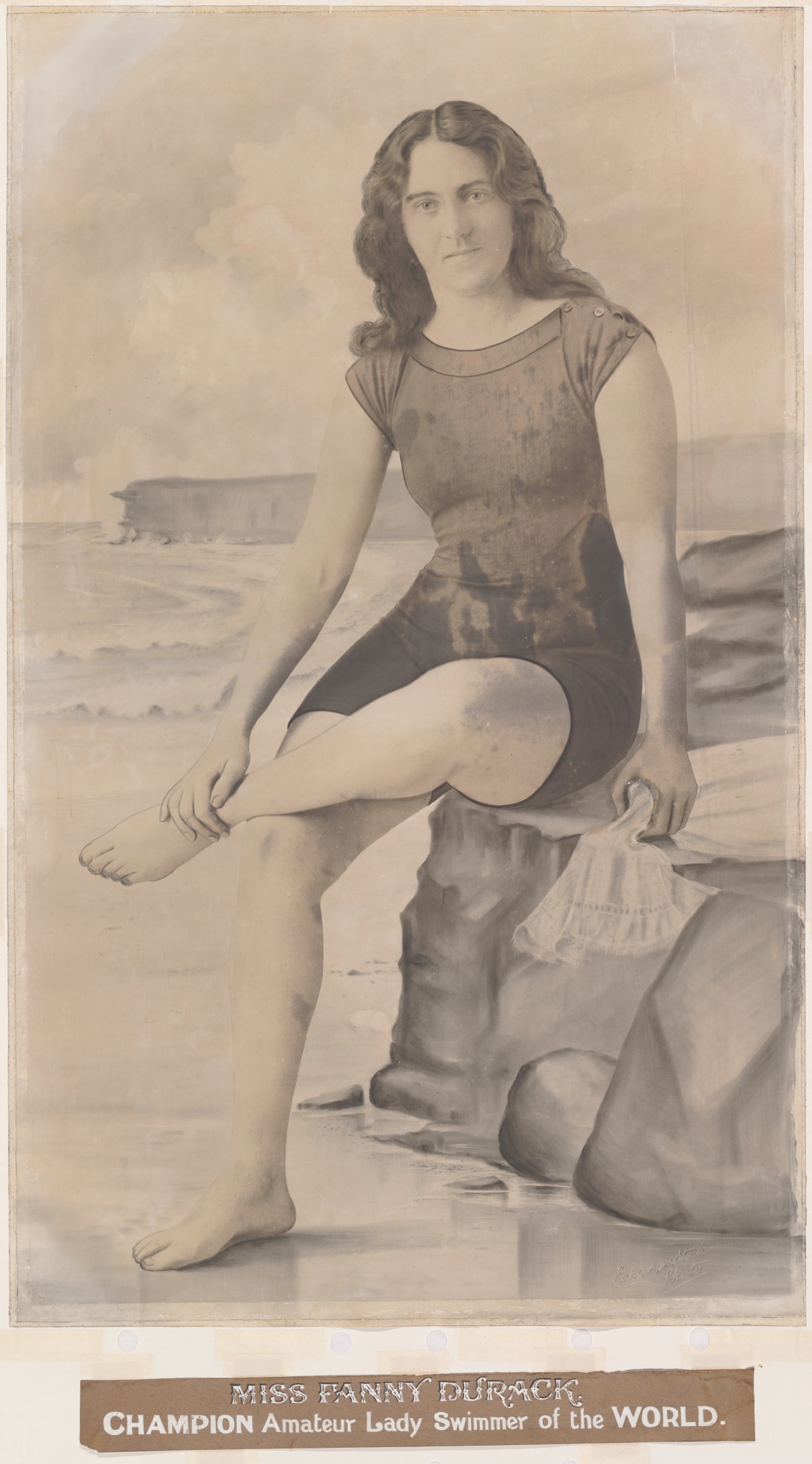One of the most significant events at the 1912 Stockholm Olympics was the admission of women into the Olympic swimming competition. This change increased the overall number of female competitors in the Olympic Games to 48 (compared to 2,359 males). Australia’s two female entrants, Sarah Frances (Fanny) Durack (1889‒1956) and Wilhelmina (Mina) Wylie (1891‒1984) made history when they won, respectively, the gold and silver Olympic medals in the 100 metres freestyle event. (Their Stockholm success came despite both women initially struggling for team selection in Australia due to opposition to their inclusion.) Durack was the first female gold medallist in the history of Olympic swimming and, at one point in her swimming career, she held every world freestyle record from 100 yards to one mile. The gold medal won by Fanny Durack, now held in the collection of the National Library of Australia, is pure gold. It was presented to the Library by Durack’s brother, Frank Clement Durack.

(1912). Olympic gold medal won by Miss Fanny Durack at Stockholm, 1912 [realia]. http://nla.gov.au/nla.obj-139311257

Exchange Studios. (1912). Portrait of Fanny Durack, 1912 [picture] / Exchange Studios photo. http://nla.gov.au/nla.obj-140681122
1. Tell your students that there was once a time, when women were not allowed in public swimming venues. Then ask your class to brainstorm why they think women were not allowed to participate in Olympic swimming. Ask students to explore the reasons why women wanted to swim.
2. Use Trove to locate articles about attitudes to mixed bathing around the turn of the twentieth century. You could start with these two newspaper items:
- IS MIXED BATHING IMMODEST? (1911, August 19). Barrier Miner (Broken Hill, NSW : 1888 - 1954), p. 5.
- A PLEA FOR LADIES' SWIMMING BATHS (1891, February 18). The Sydney Morning Herald (NSW : 1842 - 1954), p. 8.
The item from The Sydney Morning Herald is a Letter to the Editor. Ask students to write their own Letter to the Editor, imagining they are writing in about 1900, and citing their support for changing the rule that women should not swim in the company of men.
Ask students to research Fanny Durack and Mina Wylie, and their contribution to the early days of women’s swimming at the Olympics. You may wish to highlight the opportunity to listen to Mina Wylie’s oral history on the National Library of Australia’s website.
3. Invite students to locate the results of Fanny Durack and Mina Wylie’s swimming race at the Stockholm Olympics. Compare their times with the current world record for the women’s 100 metre event. Ask students to brainstorm the reasons behind the marked difference in times between 1912 and the present.
4. Task students with researching the lives of famous Olympians, both male and female. Compile a wall of students’ research results and follow this activity with a brainstorm on the shared qualities of these sportspeople, their approach to their sport and their goals.

